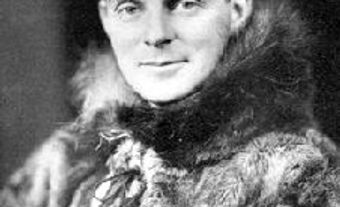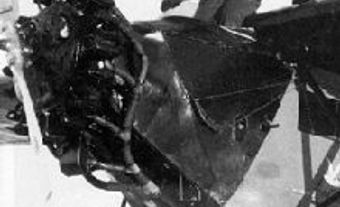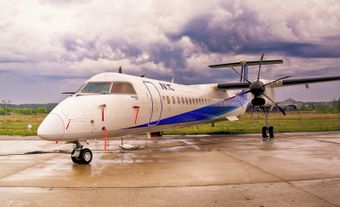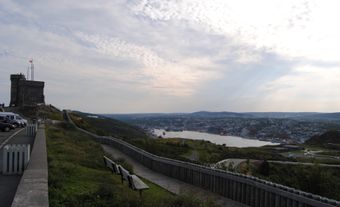In Canada, bush flying refers to aviation in sparsely populated northern areas. Flight in the Arctic and the “bush” of the Canadian Shield developed between the world wars. Early bush pilots faced the challenges of cold weather and vast distances between communities. Given the rarity of airstrips, their planes were often equipped with skis or floats so that they could take off and land on water or snow. This type of aviation was key to developing services and industries in the North. While the romantic image of the bush pilot is associated with the past, bush flying continues to serve remote communities in Canada.
Beginnings
Bush flying emerged at the end of the First World War. By that time, most of southern Canada was linked by railways, but the North remained as inaccessible as ever by land. Its many lakes and rivers did, however, provide landing areas for water-based aircraft in summer and ski-equipped aircraft in winter. Early navigation was basically by recognition as pilots followed the course of rivers.
Did you know?
Several veteran fighter pilots of the First World War became pioneers of bush flying in Canada, including Clennell Haggerston (Punch) Dickins, Wilfred Reid (Wop) May and Harold Anthony (Doc) Oaks.
Bush flying began as aerial forest surveys and reconnaissance for spotting forest fires. Laurentide and other paper companies hired ex-Royal Naval Air Service pilot Stuart Graham in 1919 to fly forest-fire patrols over the St. Maurice River valley. Using two war-surplus Curtiss HS-2L flying boats (sea planes with hulls that float), Laurentide extended its patrols from Lake of the Woods to James Bay.
Doc Oaks won the first McKee Trophy for the advancement of Canadian aviation in 1927. The award recognized his role in the development of air transport in northern Ontario, Manitoba and Saskatchewan. Oaks also invented a portable “nose hangar,” a tent-like shelter in which a mechanic could work on a plane’s engine by the heat of a stove. The Elliot Brothers of Sioux Lookout, Ontario, are credited with the development, in the late 1920s, of special skis for landing on snow or ice.
Early Air Services in Canada
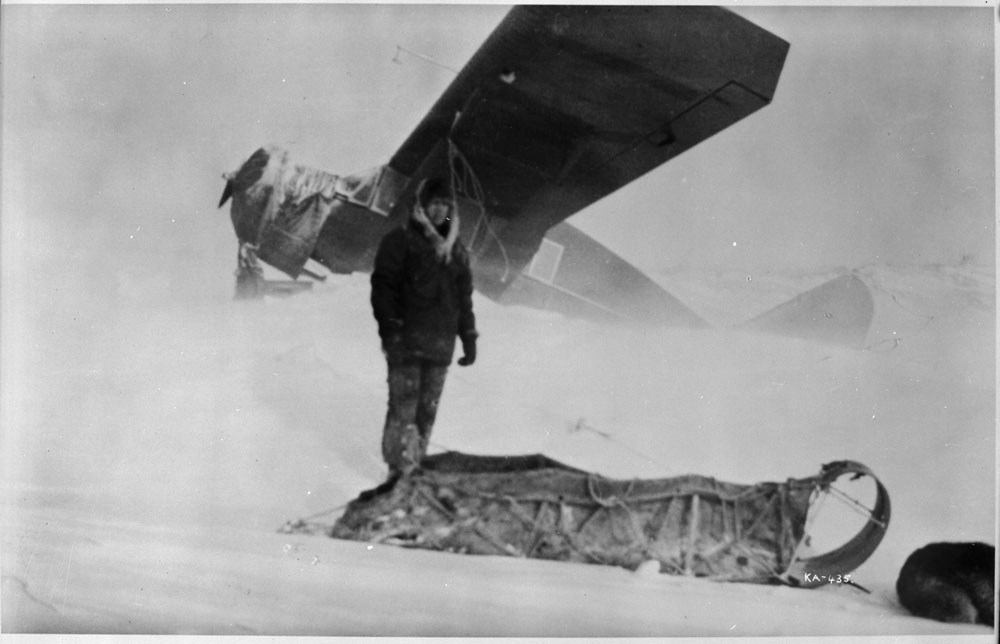
A general air service in Quebec and Ontario, Laurentide Air Service Ltd., succeeded the paper company’s earlier aerial operations. In 1924, Laurentide offered the first regular Canadian airmail, passenger and freight service from Haileybury, Ontario, to Rouyn, Quebec. Laurentide ceased operation in 1925. For the next several years, the major bush-flying organization in Canada was the Ontario Provincial Air Service (OPAS). The OPAS, established in 1924, was devoted almost entirely to forestry operations.
Aircraft proved useful in northern mining operations after the 1925 gold strike in the Red Lake district of northwestern Ontario. Patricia Airways and Exploration Ltd. carried passengers, freight and mail to the remote area. In 1928, Northern Aerial Mineral Exploration began prospecting by air vast areas around Hudson Bay.
Western Canada Airways (renamed Canadian Airways in 1930) was formed in 1926 by James A. Richardson, a wealthy Winnipeg grain merchant. One of the company’s pilots, Leigh Brintnell, set out from Winnipeg in 1929, dropped off prospector Gilbert Labine at Great Bear Lake, flew on to Aklavik, across the Richardson Mountains over Yukon and northern BC, then to Edmonton and back to Winnipeg — some 15,000 km. (In 1930, LaBine found the uranium-containing mineral pitchblende, striking it rich.)
By 1929, there was a regular air service down the Mackenzie River from Fort McMurray.
Did you know?
One of the most dramatic events of the late 1920s in Canada befell a prospecting expedition led by Lt-Col C.D.H. MacAlpine. The party flew two aircraft north from Churchill, Manitoba and got stranded on Queen Maud Gulf, in what is now Nunavut. After almost three months in the Arctic, with the help of local Inuit, the men safely reached Cambridge Bay on foot.
Expeditions and Construction Projects
Bush pilots made major surveys of the proposed route of the Hudson Bay Railway in 1926–27. Also in 1927, seven aircraft were ferried to the tip of the Ungava Peninsula in the Arctic to gather information on the navigation of Hudson Strait. In 1930, an expedition piloted by Walter Gilbert flew up the Boothia Peninsula and found a cairn containing artifacts of the Franklin Expedition.
The use of bush flying in the development of mining continued even through the Great Depression. By the mid-1930s, more freight was being moved by air in Canada than in all the rest of the world combined. The scale of bush flying greatly expanded during the development of iron ore reserves in Quebec and Labrador. To build the Quebec, North Shore and Labrador Railway, Hollinger Ungava Transport hauled fuel, food, disassembled bulldozers and even cement for a dam from 1948 to 1954. The project averaged 70 flights per day at its peak and carried tens of thousands of passengers in thousands of flights before it ended.
In the mid-1950s, Maritime Central Airways carried thousands of tons of freight for the construction of the DEW line across northern Canada. The first stages of the James Bay Project depended entirely on bush planes in the early 1970s.
Significance
Bush flying transformed the North. It became possible by the 1930s to charter an aircraft and fly almost anywhere. Aircraft services became available to trappers and missionaries as well as to geologists and surveyors. Moreover, victims of accidents or illness could be brought out quickly for medical attention.
The first such incident occurred on 28 August 1920, when William Roy Maxwell flew a patient from Moose Factory on James Bay to Cochrane, Ontario, in a Curtiss HS-2L. By the late 1920s and through the 1930s, such flights were common. The longest ambulance flight occurred from 27 November to 20 December 1939, when W.E. Catton flew a Junkers plane from Winnipeg to Repulse Bay and returned to bring out a missionary with frozen, gangrenous hands.
After the Second World War, airstrips were built in the larger northern settlements, helicopters were introduced, and good radio and navigation facilities were established along with up-to-date weather information services. All this greatly changed northern Canada and bush flying, but aircraft equipped with floats or skis continue to serve those who live and work in remote areas.
See also: Noorduyn Norseman; De Havilland Beaver; De Havilland Otter.

 Share on Facebook
Share on Facebook Share on X
Share on X Share by Email
Share by Email Share on Google Classroom
Share on Google Classroom



